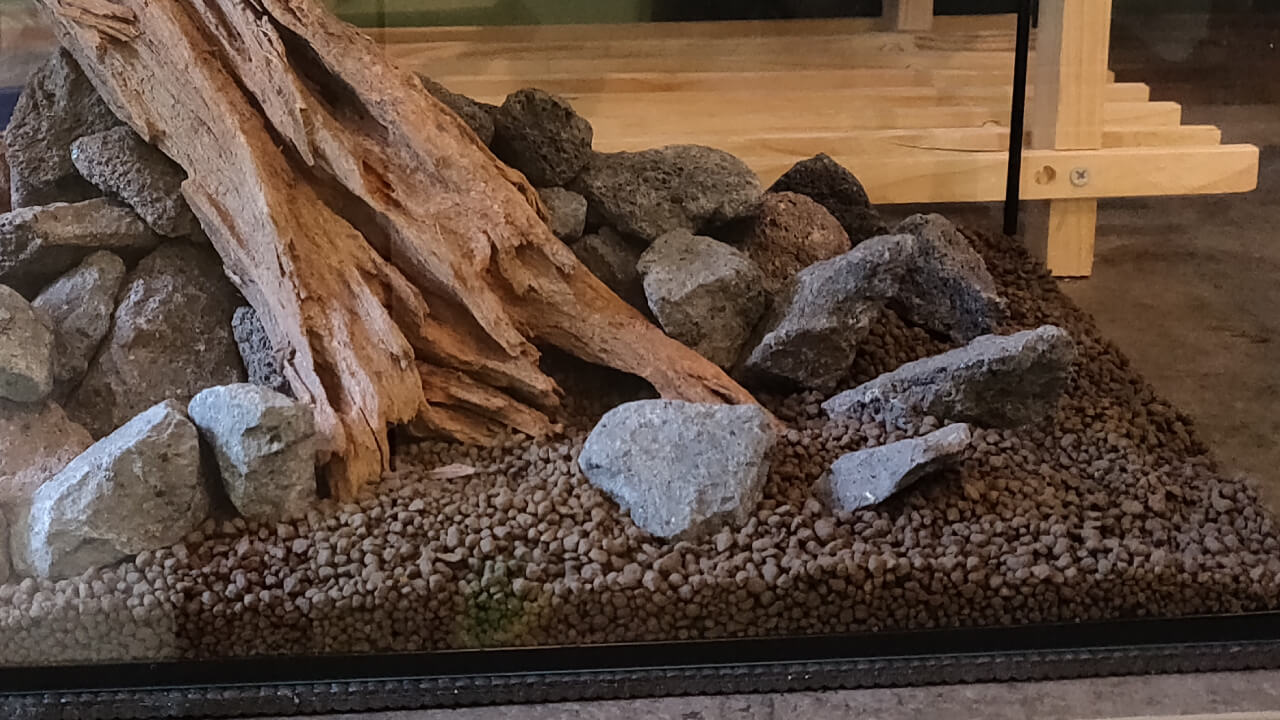Choosing the best substrate for your new shrimp tank can be a bit difficult when you’re starting out. There are lots of different options, each with their own benefits and drawbacks.
This article will help you to understand the differences and pick the perfect choice for your aquarium.
Do shrimp need a substrate?
It’s strongly recommended to use a substrate in shrimp tanks, but it’s not an absolute requirement. Bare bottom tanks are usually an aesthetic choice and just a personal preference.
Using a substrate will provide quite a few benefits:
- Give more area for biofilm to grow
- Provide more living space for beneficial bacteria and clean up crews like detritus worms
- Allow for more choice of plants
- Make the tank look more natural and interesting
- Active substrates will help stabilize the water parameters
Beneficial bacteria
More surface area for biofilm and beneficial bacteria is a very useful benefit. Biofilm makes up the vast majority of a shrimp’s daily diet, so allowing them to graze all day on the substrate is great.
Whilst the majority of the beneficial bacteria required to cycle a tank lives in the filter, a good amount will exist elsewhere in the tank. Choosing a gravel or rocky substrate will have much more surface area than sand.
Clean up crew members like detritus worms will spend most of their time hiding in your substrate. They’re an incredibly helpful part of a healthy tank system, breaking down waste for plants and the filter to take away.
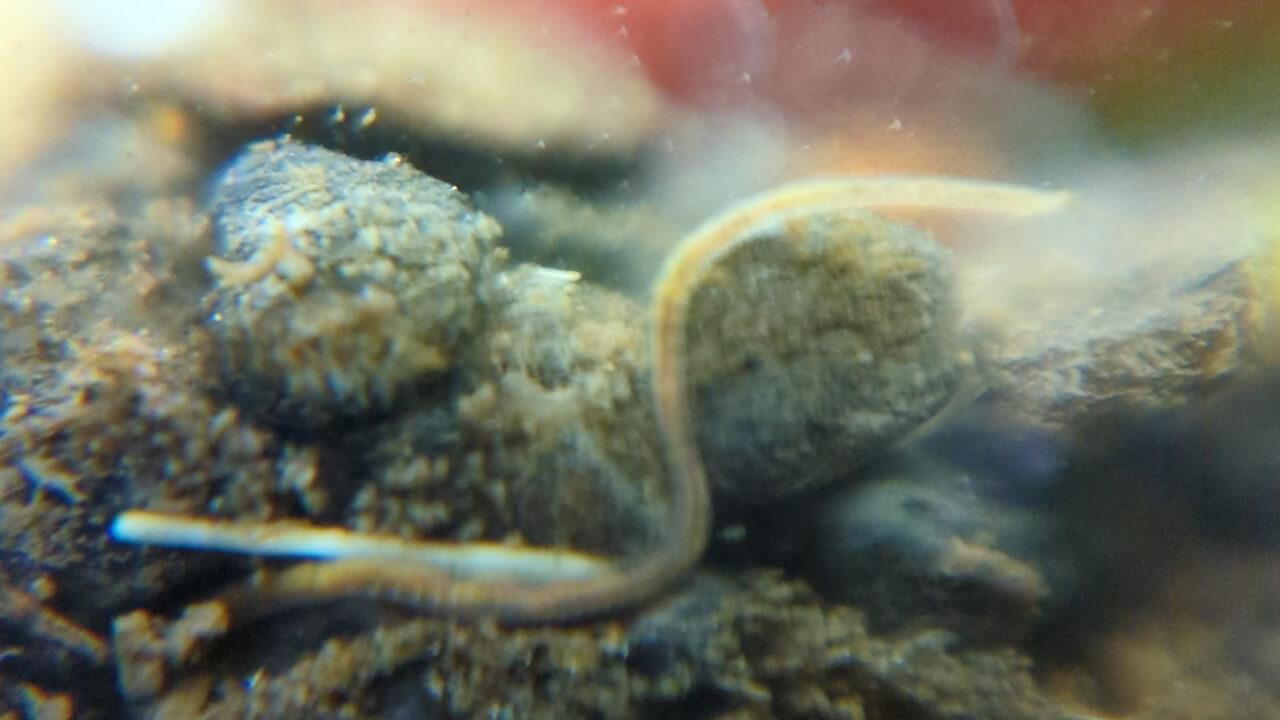
Planting
Being able to bury some plants into the substrate will give you much more freedom with aquascaping.
You can also bury root tabs (fertilizer) in it to give the plants easy access. By having nutrients right next to the roots, it’s much more efficient than diluting a fertilizer around the whole tank.
Some substrates also contain ammonia and other organic material that will help improve your plant growth.
Natural look
Rocky or granule-sized substrates are an easy way to give your tank a natural look.
In the wild, most dwarf shrimp would be found in streams and rivers, so replicating that kind of environment will be perfect for them.
Buffering
Bee shrimp prefer living in slightly acidic water. In their natural habitat, the rivers would be full of leaves slowly releasing tannins into the water, lowering the pH.
In order to keep Bee shrimp happy, you should use an active substrate to buffer the water.
Active substrates
Active substrates are purposely built to adjust the water parameters over time, specifically lowering the pH level.
They’re sometimes called buffering substrates as they’re designed to help buffer against pH swings, keeping the water stable.
As Bee shrimp require a low carbonate hardness (KH) level, we instead rely on the substrate to maintain a steady pH and reduce stress on the shrimp.
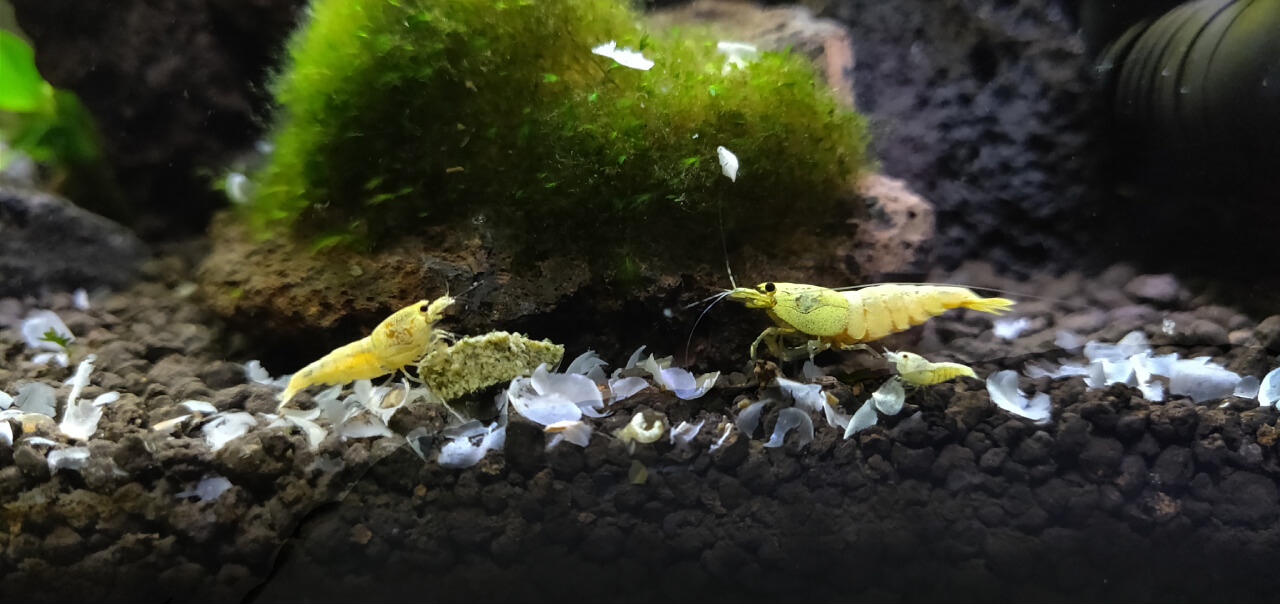
Caridina shrimp thrive in acidic water, usually in the 5.5 to 6.5 pH range. In order to give them their ideal parameters in an aquarium, we use these buffering substrates.
These substrates are typically made up of organic material that provide plenty of nutrients for planted tanks too. You should expect ammonia to leech out of the substrate for the first few weeks or months.
This is one of the reasons why you should let your tanks cycle and mature for a couple of months before adding any shrimp.
The major downside of active substrates is that they eventually wear out and need replacing. Typically, they will buffer your water properly for between 12 and 18 months before they become less effective or even useless.
Inert substrates
Neocaridina or cherry shrimp don’t require an active substrate. They’ll be absolutely fine with inert material instead, as their preferred water will be able to buffer itself with its carbonate hardness.
Sand
Using sand in a shrimp tank can create quite a stunning look, but it does have a few drawbacks.
Sand particles can get packed together over time, almost turning the ground into a kind of brick. This can lead to anaerobic pockets of gas building up as there’s no way for the air to escape.
If left to grow uncontrolled, these pockets will eventually escape into the water and could cause health problems for the inhabitants.
You should either poke the substrate with a stick every so often, when you do your water changes for example.
Alternatively, you could introduce burrowing snails like Malaysian Trumpets to aerate the sand. They will constantly turn over the sand and should prevent any of these pockets getting too large.
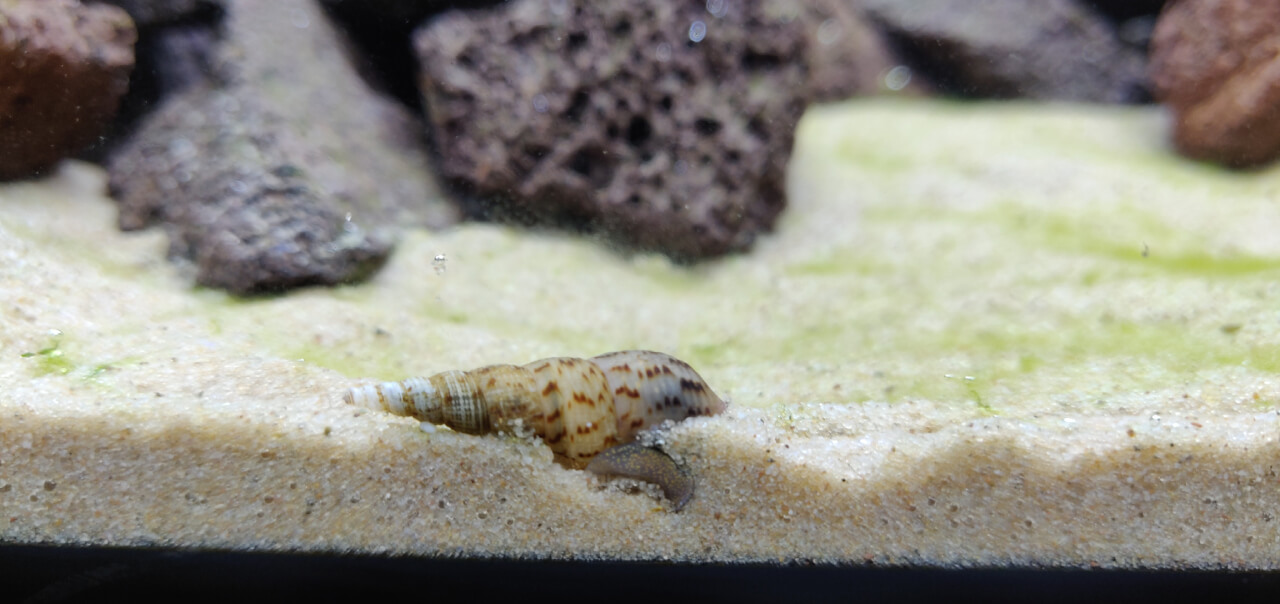
Plants buried in sand can sometimes struggle to get enough nutrients to grow properly. The sand almost suffocates the roots and reduces their ability to take in food.
Gravel
Gravel is perhaps the lowest maintenance type of substrate available.
In contrast to sand, gravel won’t compact over time and cause anaerobic gas pockets.
The loose rocks also make it easy for plants buried in the substrate to grow their roots. This makes plants much more secure as they grow, they’re unlikely to suddenly float up to the surface one day.
The small gaps around the gravel pieces allow nutrients to get in as well as clean up crew members like detritus worms.
Tiny tunnels can be burrowed in between the gravel rocks by helpful worms. Detritus worms are an important part of the natural ecosystem in your shrimp tank. Giving them plenty of room to live happily will keep your tank healthy and stable.
How deep should the substrate be?
You should aim for roughly between 1 inch and 3 inches of substrate in your aquarium.
You want enough to make sure it holds its shape and doesn’t glide along the floor with water movement from your filters.
However, if you go too deep, then you risk causing anaerobic pockets of gas to build up.
You can prevent this by either poking the substrate every so often with a chopstick to release these trapped gases, or add Malaysian Trumpet snails.
Malaysian Trumpets are known for their sand sifting. They burrow themselves into the ground, turning it over and preventing the anaerobic bubbles from building up.
Deep substrate
If you’re wanting to build an aquascape that has a tall back or hilly areas, you’ll want to pad out the space.
Instead of just pouring more substrate material into the tank, try to bury lava rocks to increase the volume. These rocks are inert, meaning they won’t react with the water and affect your parameters.
Dark or light substrate?
You’ll have a lot of choice when deciding on the colour of your substrate and this is mostly down to your personal preference. For now, we’ll only talk about the basics of dark and light colours.
Dark substrate
A dark substrate is probably the most common choice for shrimp tanks. Black gravel and dark brown Amazonia soil are very popular.
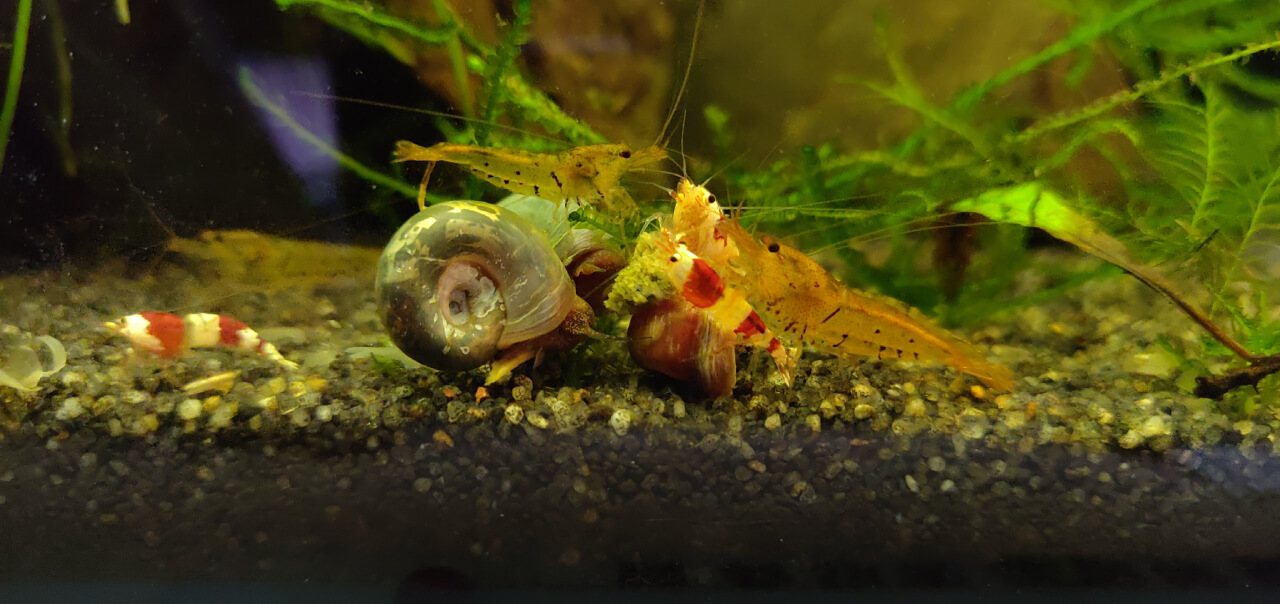
Shrimp are prey in the wild, so will naturally try to blend in to their environment and not stand out. Using a dark-coloured substrate is recommended for shrimp with deep colours like Red Cherries.
If you instead go with a lighter sand substrate, it’s more likely their colouring will become weaker over time to better match their surroundings.
Darker ground will also look cleaner for longer, as the detritus and waste on the floor will blend in.
Light substrate
Choosing a light substrate can make for some beautiful, bright aquascapes. The contrast of white sands to bright green plant leaves can be stunning.
However, lighter ground will make any dirt and detritus stand out quickly. Decaying leaves and shrimp waste will be very obvious and over time make the substrate appear darker.
To keep the ground looking bright and clean, you’ll need to gravel vac the substrate a lot more often than you would with a dark substrate.
Over time, you’ll probably see your shrimp turning a lighter colour with a white substrate. They’re prey animals in the wild, and want to camouflage themselves into the background for safety.
This is not an issue with Amano shrimp as they’re transparent, but you’ll notice it more with deeper-coloured shrimp like Yellow Fires.

